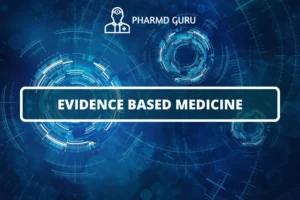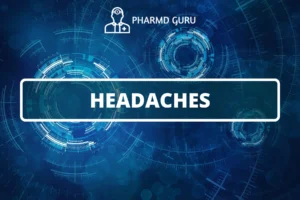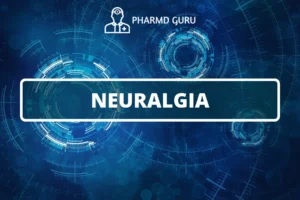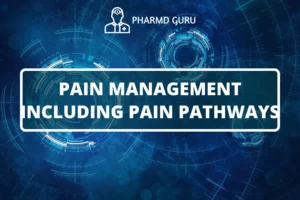Gastroesophageal reflux disease (GERD) is a chronic condition characterized by the backflow of stomach acid and gastric contents into the esophagus. It affects millions of people worldwide and can lead to troublesome symptoms and complications if left untreated. In this article, we will explore the etiopathogenesis of GERD, including the factors that contribute to its development, and discuss the pharmacotherapy options available for its management.
SCROLL DOWN TO THE BOTTOM OF THIS PAGE FOR ACTUAL NOTES.
Table of Contents
- Introduction
- Understanding Gastroesophageal Reflux Disease (GERD)
- Etiology and Risk Factors
- Pathophysiology of GERD
- Clinical Presentation
- Diagnostic Approaches
- Treatment Options
- Pharmacotherapy for GERD
- Proton Pump Inhibitors (PPIs)
- Histamine-2 Receptor Antagonists (H2RAs)
- Antacids
- Prokinetic Agents
- Surgical Interventions
- Lifestyle Modifications
1. Introduction
Gastroesophageal reflux disease (GERD) is a common digestive disorder that occurs when the lower esophageal sphincter (LES) relaxes abnormally or weakens, allowing stomach acid and gastric contents to flow back into the esophagus. This article aims to provide a comprehensive overview of GERD, its etiopathogenesis, and the pharmacotherapy options available for its management.
2. Understanding Gastroesophageal Reflux Disease (GERD)
GERD is a chronic condition that occurs when the acidic contents of the stomach flow backward into the esophagus. This reflux of gastric acid irritates the lining of the esophagus and can cause a variety of symptoms, including heartburn, regurgitation, and chest pain.
3. Etiology and Risk Factors
a. Lower Esophageal Sphincter Dysfunction:
- Weakness or relaxation of the LES
- Hiatal hernia
b. Obesity and Excess Weight:
- Increased intra-abdominal pressure
- Impaired LES function
c. Diet and Lifestyle Factors:
- Consumption of fatty and spicy foods
- Alcohol and tobacco use
d. Pregnancy:
- Hormonal changes
- Increased abdominal pressure
4. Pathophysiology of GERD
a. Lower Esophageal Sphincter Dysfunction:
- Inappropriate relaxation of the LES
- Impaired barrier function
b. Delayed Gastric Emptying:
- Prolonged presence of food in the stomach
- Increased reflux episodes
c. Esophageal Clearance Impairment:
- Reduced esophageal motility
- Inefficient clearance of refluxed acid
5. Clinical Presentation
a. Heartburn:
- Burning sensation in the chest
- Worsens after meals or lying down
b. Regurgitation:
- Sour or bitter taste in the mouth
- Backflow of stomach contents into the throat
c. Chest Pain:
- Discomfort or pressure in the chest
- May be mistaken for a heart-related condition
6. Diagnostic Approaches
a. Upper Endoscopy:
- Visual examination of the esophagus and stomach
- Detection of esophageal inflammation or complications
b. Esophageal pH Monitoring:
- Measurement of acid reflux episodes
- Evaluation of reflux severity and frequency
c. Esophageal Manometry:
- Assessment of esophageal motility and LES function
- Detection of abnormalities contributing to GERD
7. Treatment Options
a. Pharmacotherapy:
- Proton Pump Inhibitors (PPIs)
- Histamine-2 Receptor Antagonists (H2RAs)
- Antacids
- Prokinetic Agents
b. Surgical Interventions:
- Fundoplication
- Linx Device
c. Lifestyle Modifications:
- Dietary changes
- Weight management
- Elevating the head of the bed
8. Pharmacotherapy for GERD
Proton Pump Inhibitors (PPIs)
PPIs are the most commonly prescribed medications for GERD. They work by reducing the production of stomach acid, thereby relieving symptoms and promoting healing of the esophageal mucosa.
Histamine-2 Receptor Antagonists (H2RAs)
H2RAs decrease the production of stomach acid by blocking histamine receptors in the stomach. They provide symptom relief and can be used as an alternative to PPIs in milder cases of GERD.
Antacids
Antacids are over-the-counter medications that provide temporary relief from heartburn and acid reflux. They work by neutralizing stomach acid, reducing the acidity in the esophagus.
Prokinetic Agents
Prokinetic agents enhance gastrointestinal motility, improving the clearance of stomach contents and reducing reflux episodes. They are prescribed in specific cases of GERD where motility issues are identified.
9. Lifestyle Modifications
In addition to pharmacotherapy, lifestyle modifications play a crucial role in managing GERD. Some recommended changes include:
- Avoiding trigger foods and beverages
- Eating smaller, more frequent meals
- Maintaining a healthy weight
- Avoiding lying down immediately after meals
ACTUAL NOTES:




